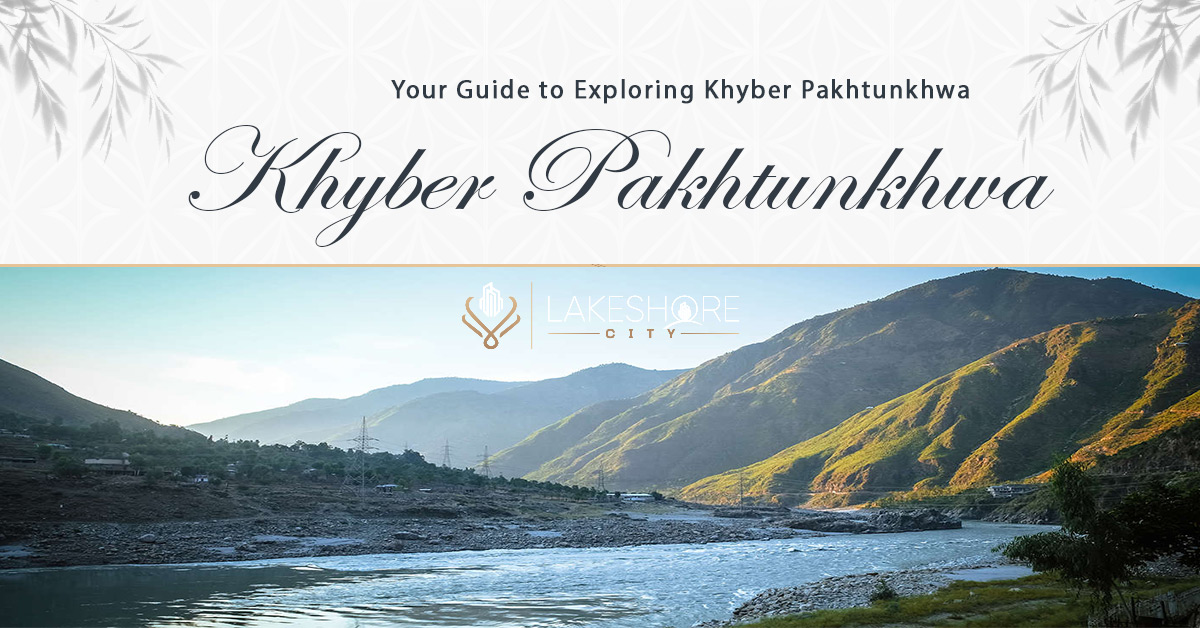In recent years, Pakistan has become an increasingly popular vacation spot. Since Pakistan was just named the best travel destination in the world for 2020 by Conde Nast, an increasing number of tourists from other countries are planning to visit the country. Khyber Pakhtunkhwa (KP) is the fourth largest province in Pakistan and is home to a rich cultural history that we have only begun to scratch the surface of. In addition, Forbes has named Pakistan as one of the top 10 off-the-beaten-path travel destinations for 2020. What a change for a nation that was thought to be dangerous just a few short years ago!
Not only does the province of Khyber Pakhtunkhwa border Afghanistan, but the people, customs, and traditions of Afghanistan have a profound impact on the area’s own culture. Amazing natural scenery, stunningly pure blue lakes, lush valleys, unspoiled forests, and ancient sites dating back to the Gandhara culture may all be found in Khyber Pakhtunkhwa. KP was the capital of the ancient Gandharan kingdom, and its ruins attest to this fact. The government of KP is working hard to transform five dams in Haripur, Kohat, Swabi, Nowshera, and Abbottabad into recreational areas for locals and visitors alike.
Let’s check out some of Khyber Pakhtunkhwa’s top landmarks and sights.
Best Tourist Attractions in Khyber Pakhtunkhwa
Since there is such a wide variety of things to do in Khyber Pakhtunkhwa, we have broken the information down into four sections. Before diving into a detailed examination of KP’s best sights, we’ll take a tour of the province’s most notable urban centers and scenic valleys. The final two chapters will cover the best restaurants and souvenirs in Khyber Pakhtunkhwa. First, though, let’s examine the KP cities that absolutely cannot be missed.
Top Attractions in KP – Valleys and Cities
Let’s take a look at the best tourist attractions in Khyber Pakhtunkhwa.
Chitral
Located to the west of the Kunhar River, this idyllic setting sits at the foot of the Hindu Kush Mountains. If you want to make the most of your time in Chitral, you should go during the summer when the valley is full of cherry, apricot, and pomegranate trees, while the surrounding mountains and meadows are blanketed in snow.
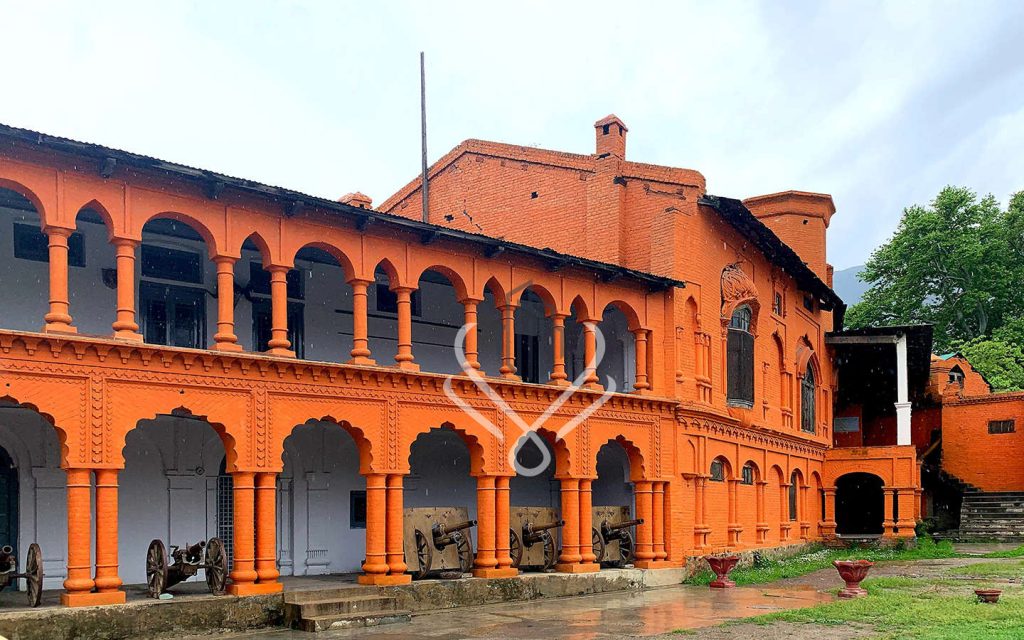
The women of Kalash Valley wear traditional embroidered gowns and the men wear feather caps, making this area of Chitral a tourist hotspot. Chitral is also home to the lovely Broghil, Barmoghlast, Goleen, and Ayun Valleys. The valley is home to the refreshing Garam Chashma River, and history buffs shouldn’t miss a trip to the Shahi Qila, better known as Chitral Fort. It was constructed back when Chitral was still a princely state before the country was split up. There, the royal guard, known as Mehtars in the native language, lived in their barracks.
Between April and October is the ideal time to visit the valley. The valley receives a heavy blanket of snow during the winter months. To get to Chitral, you can either take an airplane from Islamabad or drive there. If you’re going, keep in mind that the N-45 freeway is about a 10-hour journey to the valley.
Swat Valley
Swat is a beautiful valley where the mighty Swat River flows. Resorts abound along the banks of the Swat River, and the scenery at both dawn and dusk is spectacular. Most visitors come to Swat in the summer to take advantage of the region’s many cool waterfalls and river streams, but the region is beautiful at any time of year.
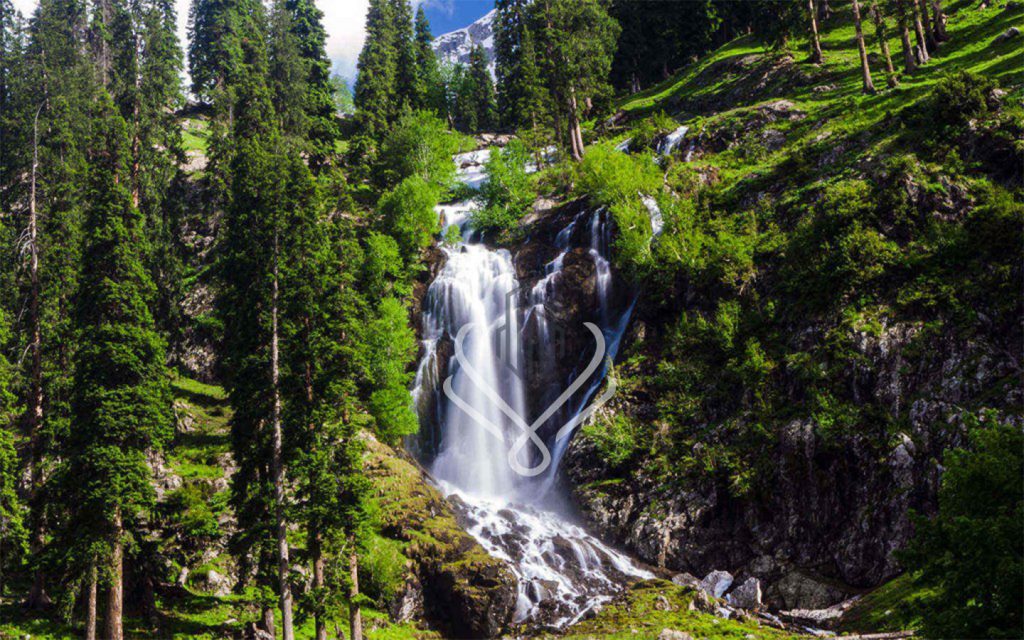
With its pristine rivers, natural waterfalls, gushing river streams, and tall pine trees set against snow-capped mountains, this region has earned the moniker “East Switzerland” among international travelers. The Buddhist stupas, White Palace, and Takht-i-Bahi, which portray the country’s rich history, as well as the azure waters of Mahodand Lake, the snowy ski resort at Malam Jabba, and the verdant green meadows and pine woods of Kalam, all seem to have been plucked straight from a fairy tale.
Naran and Kaghan
Naran, Shogran, and Kaghan Valley are popular tourist destinations about 240 kilometers north of Islamabad. Siri Paye, for example, is a breathtaking destination known for its verdant meadows and dramatic mountain setting.
What makes Siri Paye so unique are the low-hanging clouds that you can walk through like a ghost. Visitors can also see a reflection of Malika Parbat in the clear waters of Lake Saif-ul-Malook, located 9 kilometers from Naran in Mansehra District. Babusar Top, a mountain pass 70 kilometers from Naran that links Thak Nala and Chilas is another popular destination in the area.
The list continues since Khyber Pakhtunkhwa is endowed with incomparable splendor and untouched natural settings. Malam Jabba is one such location, however, it has been transformed into a winter sports destination in recent years, and now hosts several events and festivals dedicated to the winter season.
Malam Jabba
In the winter, Malam Jabba transforms into a popular ski destination. Located at more than 9,000 feet above sea level in the Hindu Kush mountains of Swat Valley. Professional and amateur skiers alike will find some of the region’s top runs here. In the winter, when the snow is deep and stable, people go to the peak to go skiing, snow tubing, and ice skating. There are several well-maintained pistes and 800-meter ski lines that cater to both beginners and experts of all skill levels.
Skiing at Malam Jabba is a popular activity for visitors to Khyber Pakhtunkhwa, and the season typically runs from January to March. It takes around 6 hours to drive from Islamabad to the resort.
Abbottabad
Abbottabad is a hub for travelers heading to northern destinations like Nathiagali, Naran, etc. Outside of its role as a transit hub, Abbottabad is a popular tourist destination thanks to its proximity to several attractions like Harnoi, which is just 11 kilometers outside of the city proper.
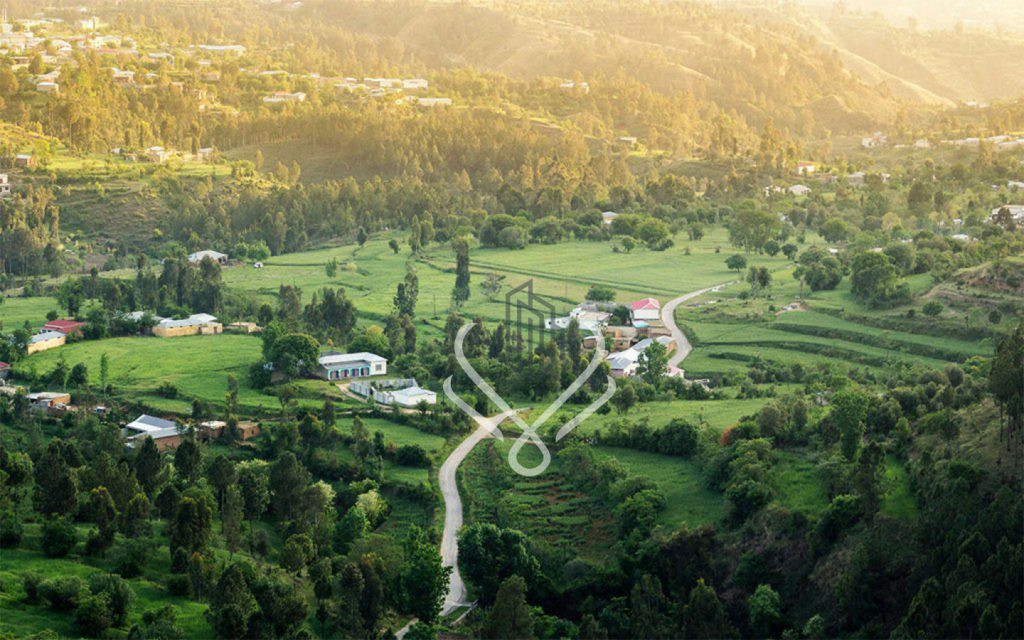
The city is encircled by verdant mountains, and icy streams cut through it. Thandiani, located 31 kilometers from Abbottabad and 2,700 meters above sea level, is a popular day trip for anyone staying in the area for even a couple of days. Thandiani gets its name because of the extreme cold and verdant pine forests that surround it. St. Luke’s Church is not to be missed by history buffs. The building dates back to colonial times, in the 1860s. Before the period of partition, the Lady Garden Public Park was a popular hangout for high-society British women in the evenings. Because of its historical significance, KP attracts a lot of visitors.
Kumrat Valley
Kumrat Valley is a hidden gem in Khyber Pakhtunkhwa that has yet to be discovered by the outside world. It is encircled by verdant pine forests, cascading waterfalls, and excellent river currents. Kumrat Valley, located in Upper Dir, was previously closed to tourists because of safety concerns. The government of Pakistan, however, has made some efforts to attract tourists to those underserved regions.
The gorgeous wooden mosque built from Deodar trees with complex carvings and detailed artwork dates back to the 19th century and can be found in Thall Town, which is about four hours away from Timergara through the Dir-Chitral road. It will take you between 45 minutes and an hour to get from Thall Town to your final destination. Trekking to Katora Lake and Kaala Chashma from the Jahaz Banda meadows and waterfalls is another popular activity for visitors to Kumrat Valley.
Galiyat
Between Abbottabad and Murree, there is only a skinny neck of land. The majority of the Galiyat area is made up of rolling hills covered in verdant meadows and tall pine trees and boasting cool, damp weather. The Galiyat region in KP includes the cities of Ghora Gali, Nathiagali, Changla Gali, and Dunga Gali. Many fast-food restaurants and three-star hotels have recently opened in Pakistan to attract more tourists. The number of visitors to Galiyat increased by a staggering 139% in 2019.
Peshawar
Peshawar, the provincial capital, has been inhabited since 539 BC, making it one of the oldest cities in Pakistan. The inhabitants of Peshawar are known for their warm hospitality, and the city’s streets are often bustling with shoppers picking up anything they choose from the many roadside stalls.
Being an ancient metropolis, it naturally features many monuments, artifacts, and archaeological sites from the Mughal period and beyond. Qissa Khwani Bazaar, Bala Hisaar Fort, Mahabat Khan Mosque, Sethi Houses, and the Peshawar Museum are some of the city’s most popular landmarks. In 1990, the “Ghanta Ghar” or “Clock House” was constructed to celebrate Victoria’s Diamond Jubilee. In honor of Sir George Cunningham, the former British governor and political agent in the province, the tower is also known as Cunningham Clock Tower. The Buddhist sculptures of the Gandhara period are what make the Peshawar Museum so famous. Originally constructed in 1907, the building’s red brick front conceals a large hall, ground-level side galleries, and upper-level side galleries. The majestic Buddha statue, which is nearly life-size, draws many sightseers to the main hall.
Top Historical Places to Visit in KP
If you are a history aficionado, then you must visit these historical places in KP.
Masjid Mahabbat Khan
Originally built during the Mughal Empire, the Mahabat Khan Mosque now resides in the old city’s Andar Sher Bazaar. Emperor Shahjahan commissioned its construction in the year 1670. Some historians claim that the high minarets of the Mahabat Khan Mosque were routinely used as makeshift gallows to execute criminals. When the Soviet Union invaded Afghanistan, tribal chiefs would meet at the mosque to rally the population. The mosque’s entrance opens up into a spacious courtyard where worshippers can gather.
Takht-e-Bahi
Takht-e-Bai, a Buddhist monastery dating back to the 7th century, is a popular destination for visitors. Established in the 1st century CE, it was declared a World Heritage Site by UNESCO in 1980. Important artifacts from the Gandhara culture can be found at this monastery. The building’s tranquil location and fascinating history make it a popular tourist destination. The two wells on the hills are the inspiration for the location’s moniker. A spring that rises from the very top, or Takht, is called a Bahi.
Chitral Fort
The past rulers of the region once resided at the majestic Chitral Fort, which is located on the western banks of the River Chitral. The layout of the fort is very similar to that of the Lahore Fort, another example of Mughal construction.
The fort was constructed using mud bricks and extensive amounts of deodar wood, and it is divided into three sections: a residential space with doors leading out to the riverfront garden; a secretariat; and the barracks for the soldiers. There was a specific seating arrangement in the secretariat amongst towering chinar trees for when the then-rulers would hold up open Kutcher.
Chitral Fort has a rich history, and if you hire a guide, he will share it with you. One legend has it that in 1892 when a conflict of succession broke out among Prince Aman-ul-Mulk’s sons, the fort became the target of a British Army unit of 400 men.
Gor Khatri
Peshawar’s public park is housed in a renovated caravanserai from the Mughal era when it served as a rest stop for merchants and soldiers. There are two entrances to the fortified fortress, one facing east and the other west. The Hindus of Peshawar take great care of the Gorakhnath Temple, which sits in the caravanserai’s central courtyard beneath a banyan tree. The government has converted one of the structures into a museum where priceless artifacts and antiquities are on display. In addition, boutiques are selling locally made goods, like as jewelry and shawls from the Peshawar region.
Peshawar is one of the oldest cities in South and Southeast Asia, and recent discoveries at Gor Khatri have pushed its date back by a few centuries. Researchers have identified evidence of at least 13 distinct cultural periods at the site, beginning with the colonial era and ending with the Indo-Greek period (about 200 BCE).
Sethi House Complex
Bazaar Kalan, one of Peshawar’s oldest neighborhoods, can be reached by the western gate of Gor Khatri. Nearby lies the Sethi Mohalla, where Karim Bakhsh Sethi constructed the main haveli for his community of six or seven homes. The main haveli features a courtyard with a classic fountain that is likely hundreds of years old, and the lounge area is filled with light from the many colorful windows in the bedrooms. Visitors are impressed by the building’s design and eager to learn more about its background.
The Khyber Pass
Khyber Pass, a mountainous border area between Afghanistan and Pakistan, was a major invasion route for historical figures such as Genghis Khan, Mahmud Ghaznavi, and the Moguls.
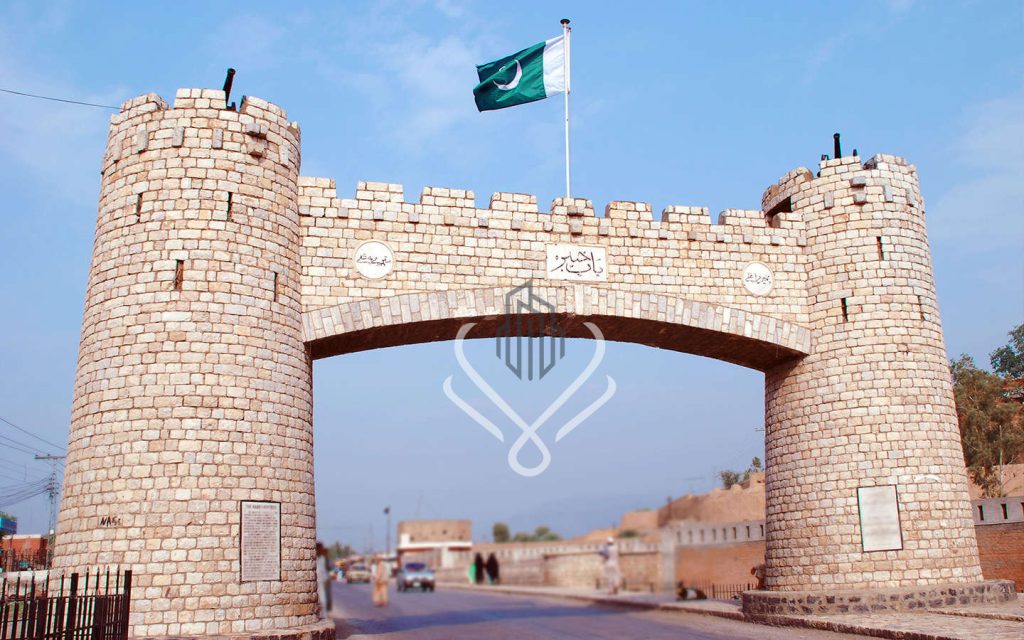
Bala Hisar Fort
This ancient Peshawar fort was the official abode of numerous kings and queens who ruled the region. Bala Hisar Fort served as the official palace of Afghan kings until the early 19th century. The Frontier Corps of the Pakistani Army is now stationed there. The provincial government, eager to boost tourism, has made the attraction available to visitors. Weekends are reserved for families, but anybody can come on Sundays; just remember to bring your CNIC and, if you’re from out of the country, your passport, in case there’s a security check.
What to Eat in KP?
The cuisine of Khyber Pakhtunkhwa is well-known. Meat is a staple in the diet of the local population. Khyber Pakhtunkhwa is home to some delicious cuisine, including the famous Chapli Kebab, Charsi Tikka, Shinwari Karahi, Dumpukht Biryani, Kabuli Pulao, and Namkeen Boti.
Souvenirs to Take From KP
Take the following souvenirs back home with you.
- Peshawari chappal is a footwear that the local people wear.
- Peshawari embroidered koti (a sleeveless jacket) which Pashtuns wear over Shalwar Kameez. It’s traditional. Sometimes the Koti is not embroidered, so you can easily choose if you want something fancy or buy a plain koti
- Jewellery, especially, handmade bracelets with real stones are a popular Peshawari souvenir
- Nuts are cheaper in this part of the country. You will find Kaghazi Badam, and Chilghoza (Pine Nuts) in abundance here
- Kalash embroidered dress is what the local Kalash women wear. It is intricately designed and embroidered with elaborate headgear.
So, which of these tourist attractions in Khyber Pakhtunkhwa are you planning to visit next?
Conclusion
Khyber Pakhtunkhwa (KP) in Pakistan is a fascinating and diverse province with a rich cultural history and breathtaking natural beauty. The region has transformed itself from being considered a dangerous destination to becoming a popular tourist spot, especially after being named one of the world’s best travel destinations by Conde Nast and Forbes. With its stunning valleys, historical landmarks, and unique cuisine, KP offers a wide range of attractions for visitors to explore. From the picturesque Chitral and Swat valleys to the historic cities of Peshawar and Abbottabad, as well as the lesser-known gems like Kumrat Valley and Malam Jabba, KP is a treasure trove waiting to be discovered. The province’s blend of historical sites, natural wonders, and warm hospitality make it an enticing destination for travelers seeking an authentic and enriching experience.
Frequently Asked Questions (FAQs):
Q1. Why has Khyber Pakhtunkhwa become a popular tourist destination in recent years?
Khyber Pakhtunkhwa has gained popularity as a tourist destination due to its stunning natural scenery, historical landmarks, warm hospitality, and efforts by the government to promote tourism. Positive reviews from travel publications like Conde Nast and Forbes have also contributed to its rising popularity.
Q2. What are some of the top attractions in Khyber Pakhtunkhwa?
Khyber Pakhtunkhwa offers a diverse range of attractions, including Chitral Valley with its unique culture, Swat Valley’s natural beauty, historical sites like Takht-e-Bahi and Chitral Fort, skiing opportunities at Malam Jabba, and the bustling city of Peshawar.
Q3. What is the significance of the Mahabat Khan Mosque and Takht-e-Bahi?
The Mahabat Khan Mosque is a historic Mughal-era mosque in Peshawar known for its intricate architecture and central courtyard. Takht-e-Bahi is a Buddhist monastery dating back to the 7th century and is a UNESCO World Heritage Site, showcasing artifacts from the Gandhara culture.
Q4. What is the cuisine like in Khyber Pakhtunkhwa?
The local cuisine of Khyber Pakhtunkhwa is known for its emphasis on meat dishes. Some popular dishes include Chapli Kebab, Charsi Tikka, Shinwari Karahi, Dum Pukht Biryani, Kabuli Pulao, and Namkeen Boti.
Q5. What souvenirs can I take home from Khyber Pakhtunkhwa?
Visitors can consider taking back Peshawari chappal (footwear), Peshawari embroidered koti (sleeveless jacket), locally made jewelry with real stones, nuts like Kaghazi Badam and Chilghoza (Pine Nuts), and Kalash embroidered dresses as unique and authentic souvenirs from Khyber Pakhtunkhwa.
Our Featured Article:
Read More: Pakistan’s Growing Potential in Medical Tourism
Read More: Tourism Development Projects Approved by National Assembly
Don’t miss the chance to invest with Lakeshore! Secure your investment today by investing your financial investment with Lakeshore in the following available options like Lakeshore City, Lakeshore Club, and Lakeshore Farms.
For More updates, please Contact +92 335 7775253 or visit our website https://lakeshorecity.com/
Lakeshore City is the upcoming elite lifestyle at Khanpur Dam. Offering no parallel amenities for the members and owners of distinguished farmhouses.
Become Part of Luxurious Lifestyle
Contact: 0335 7775253


